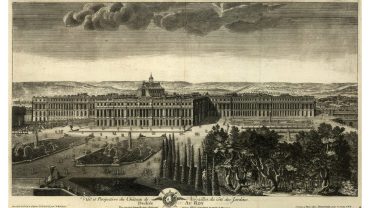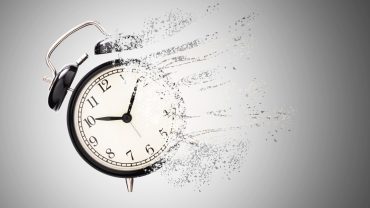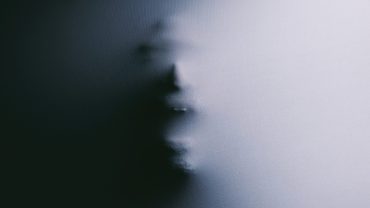Numbers radio stations, often shrouded in mystery and intrigue, have captivated the attention of shortwave radio hobbyists and mystery seekers alike for decades. These stations, characterised by their unique broadcasts of seemingly random sequences of numbers, words and sounds, are often voiced by a synthetic or eerily calm human voice, and sometimes preceded by a piece of music or a set of tones, serving as a marker or call sign for the intended recipients.
The exact origins and purposes of numbers spy stations are shrouded in secrecy, adding to their mystique. In one form or another, these broadcasts have been operational since World War I, gaining prominence during the Cold War. Their persistence into the digital age, despite the advent of more secure communication methods, only deepens their intrigue.
So what are number stations? Are these bizarre broadcasts coded messages for clandestine operatives in the field? Are they secret military communications? Or are they, as some people believe, forms of mind control, or messages to and from extraterrestrials?
Let’s take a trip into the ultra-secret world of clandestine radio transmissions in an attempt to shed some light on the baffling number stations mystery.
53cret1ve 51mpl1ci1y

A wireless radio. (Credit: MrLonelyWalker via Getty Images)
The answer to the question ‘what are number stations’ is deceptively simple. Number stations are mysterious shortwave radio stations that broadcast sequences of numbers, letters, or Morse code, often read by a real, synthetic or distorted voice.
These transmissions are typically straightforward, consisting of a series of spoken words or numbers or Morse code messages, sometimes accompanied by music, mechanically generated sounds, or a distinct tune or set of tones to indicate the start or end of the broadcast. Some have suggested the music and sounds are designed to confirm the authenticity of the sender.
How are Number Stations Transmitted?

A shortwave transmitter. (Credit: Kypros via Getty Images)
The beautifully ephemeral nature of numbers radio stations lies in their simplicity and obfuscation. A basic shortwave transmitter and an anonymous location are sufficient to start a numbers station. This simplicity also makes it difficult to trace the origins of these broadcasts, adding to their secretive nature.
Shortwave radio is chosen as the primary medium for these broadcasts due to its unique properties. Shortwave frequencies have the ability to travel long distances, bouncing off the ionosphere and reaching receivers thousands of miles away from the source. This makes shortwave ideal for international or long-distance communication. Additionally, shortwave radios are relatively inexpensive and widely available, allowing the intended recipients of these messages (often speculated to be spies or operatives in foreign countries) to receive them without attracting attention.
The strength and consistency of the signals vary, with some numbers spy stations transmitting on a regular schedule while others appear sporadically, often without warning. The seemingly random nature of these broadcasts adds to their enigmatic appeal, as they can often be heard by anyone with a basic shortwave radio receiver.
One-Time Pads
The messages transmitted by number stations are believed to be coded instructions or information intended for spies or military personnel operating in foreign countries. The use of a one-time pad, an encryption method where each page of the pad is used to decode a message and then destroyed, ensures that these messages remain virtually unbreakable if used correctly.
Like the coded messages emanating from the numbers radio stations themselves, the way one-time pads work is also deceptively simple. They are nothing more than pads of paper on which words are assigned a seemingly random string of numbers. When the agent in the field hears a set of numbers, he or she then refers to the pad to decipher the message. The beauty is that the numbers on the pad are only used once.
This has led to widespread speculation about the purpose and origin of these broadcasts, and the number stations mystery includes theories ranging from government communications to alien signals. However, due to the inherently secretive nature of these stations, concrete information about their operators or intended audience remains elusive.
The Most Famous Numbers Stations

Morse Code communications (Credit: Matthew Troke via Getty Images)
Numbers stations are strangely unsettling, but they have fascinated listeners and researchers for years. Some of the most famous numbers spy stations have taken on an almost mythical status.
It’s worth noting that there has been no official acknowledgment or admission by any government, intelligence agency, or organisation regarding the operation of numbers stations. The secrecy surrounding these broadcasts is a key aspect of their operation, ensuring the anonymity and security of both the sender and the receiver.
Despite extensive research, analysis, and monitoring by enthusiasts and experts, there has been little concrete evidence to definitively link these broadcasts to specific government entities. While there are strong suspicions and educated guesses about the origins of certain well-known stations, there is no formal confirmation.
This lack of official confirmation has contributed to the aura surrounding the numbers station mystery and has fueled various theories and speculations about their purposes and operators. The continued operation of these stations in an era of advanced digital communication suggests their continued relevance and importance to undisclosed entities.
The Lincolnshire Poacher
Named after the English folk tune that preceded its transmissions, it’s believed the Lincolnshire Poacher operated from the early to mid-1970s until around 2008. Broadcasts typically involved a series of five-digit numbers in an English-accented female voice between around 6 and 16 MHz on the shortwave frequency. Some believe it was operated by the British Secret Intelligence Service (MI6), with transmissions said to have originated first from a government-owned location in Buckinghamshire and later from an RAF base in Cyprus.
UVB-76 / The Buzzer
Perhaps the most enigmatic of all numbers stations is UVB-76, also known as The Buzzer. It’s famous for its continuous, short, monotonous buzzing tones, interrupted occasionally by live voice communications in Russian. It has been broadcasting since the late 1970s on the frequency of 4625 kHz and is believed to be active still. The station may be Russian and broadcasts 25 tones per minute, 24 hours a day.
Swedish Rhapsody
Operating between 5.733 and 11.525 MHz, one of the most famous numbers stations gained notoriety for its transmissions of a music box rendition of the ‘Swedish Rhapsody’ melody, followed by a girl’s voice reading numbers in German (originally thought to be live, later discovered to be machine-generated). It was most active during the Cold War era. According to declassified documents released by the Polish government in 2014, it was operated by the Polish People’s Republic which existed from 1947 until 1989, however the last broadcast date was said to be as late as 2007.
Atención
Known for the repeated Spanish phrase “Atención” before the reading of number groups, this numbers radio station was particularly active in the 1980s and 1990s. It’s widely believed to have been operated from Cuba, possibly sending coded messages to spies in the United States and elsewhere.
Yosemite Sam
This unusual station transmitted only a few times between December 2004 and February 2005, but gained notoriety for broadcasting a clip from the cartoon character Yosemite Sam, followed by a data burst which began precisely seven seconds after the top of the hour. Its origins and purpose remain a mystery, but it was rumoured to have been located in or around Albuquerque, New Mexico.
What 4re Number 5tations 4?

Are number stations used for secure military communications? (Credit: Milan_Jovic via Getty Images)
Numbers stations have long been a source of fascination and speculation, leading to a range of theories about their purpose and origins. These theories range from the plausible and well-grounded to the more outlandish and speculative. Here are some of the prevailing theories:
Espionage Communications
The most widely accepted and plausible theory is that numbers stations are used for espionage. They’re believed to broadcast encrypted messages to spies in foreign countries. The use of shortwave radio for these transmissions makes sense, as it allows messages to be sent over long distances and can be received discreetly with relatively simple radio equipment.
Military Communications
Similar to the espionage theory, some believe these stations are used for secure military communications. This could include sending orders or information to soldiers, ships, or embassies in foreign territories where secure, direct communication lines might not be available or safe.
Non-Governmental Organisations
A less common theory is that some of these numbers spy stations might be operated by non-governmental organisations or large corporations for secure internal communication. However, there’s little evidence to support this theory.
Scientific Use
Some speculate that these stations could be involved in scientific research, possibly transmitting data for experiments that require remote communication, such as in geographically isolated or politically sensitive areas. Again, there’s little evidence to suggest this theory is likely.
Art or Social Experiment
A more unconventional theory is that some of these broadcasts might be elaborate art projects or social experiments, designed to provoke curiosity or study the reactions of listeners. This is potentially unlikely, given many of these numbers stations were broadcasting from as far back as the 1950s.
Cultural or Historic Preservation
A less common and more recent theory is that some numbers stations might be operated by individuals or groups interested in preserving the culture or history of shortwave radio broadcasting, especially as traditional uses of shortwave decline in the digital age.
Conspiracy Theories
On the more outlandish end of the spectrum, there are numerous conspiracy theories. These range from the idea that numbers radio stations are a form of mind control or psychological operations, to the belief that they are communicating with extraterrestrial beings or involved in supernatural phenomena.
The 3nduring 3nigma of Numbers 5tations

Numbers stations - a baffling enigma (Credit: Anton Petrus via Getty Images)
Numbers stations remain one of the world’s most enduring enigmas, fascinating both casual listeners and serious researchers alike. Their simple yet effective mode of broadcasting, combined with the anonymity provided by shortwave radio, creates a perfect storm for speculation and intrigue. From the Lincolnshire Poacher to the enigmatic UVB-76, these stations whisper the remnants of Cold War espionage, while their continued operation suggests a still-relevant, though hidden and barely understood, role in today’s society.
As technology advances, so does the mystery of these stations, leaving us to wonder about the secrets carried on these ethereal waves and the shadowy figures who may receive them.












